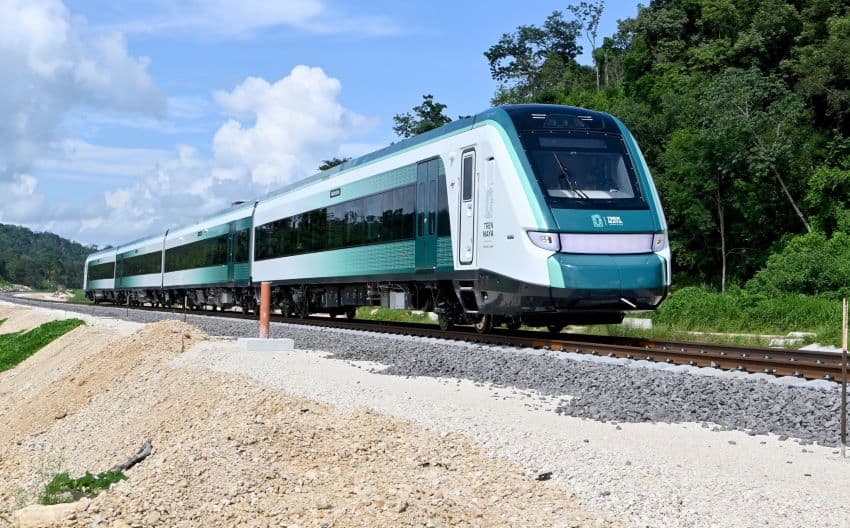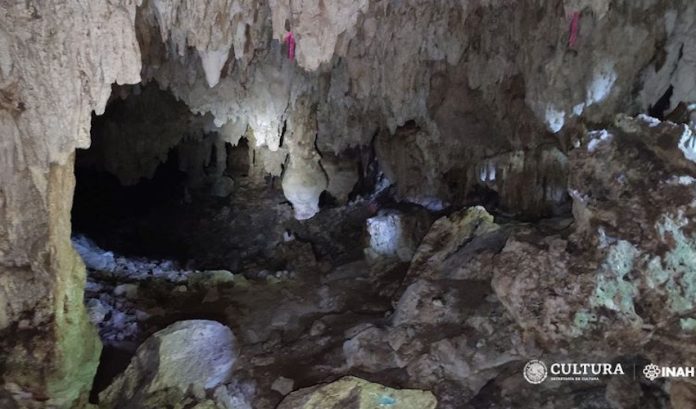Amidst the excitement of the Maya Train’s inaugural run later this week comes news of more discoveries within its boundaries: a cave that has retaining walls possibly built by ancient Maya people during pre-Columbian times.
The cave in Quintana Roo is quite a find, in part because it includes 1,106 features associated with human presence, said Diego Prieto Hernández, general director of the National Institute of Anthropology and History (INAH). It may have served as a place of shelter or an enclosure.

The agency issued a press release about their findings in the cave on Monday, and Prieto explained it is a natural formation located along Section 5 of the Maya Train, between Playa del Carmen and Tulum and within the Paamul II Ecoarchaeological Corridor.
That’s the same area where an ancient enclave of more than 300 buildings, some over 8 meters high, was found in 2022 and named Paamul II. Among the findings made by experts with INAH and the Program for the Improvement of Archaeological Zones (Promeza) in Sections 5, 6 and 7 of the Maya Train are 579 objects such as figurines or vessels; support walls indicating areas that served as shelters or enclosures; 140 human remains; and more than 200,000 ceramic shards.
Archaeologists are going to need “to be very careful” as they excavate, Prieto said, noting that many of the remains are in areas of dissolving bedrock, which could mean the presence of sinkholes and other hazards.The investigation is being conducted by a team of specialists, led by archaeologist Susana Echeverría Castillo.
There have been numerous archaeological discoveries during the multi-year Maya Train project. Recent findings have included a well-preserved sculpture of a Maya warrior head in Chichén Itzá, a circular temple in Campeche dedicated to the Maya serpent deity Kukulcán and an 11 mile long Maya road in the Yucatán jungle.The latter discovery was made by INAH scientists using LIDAR, a remote laser sensing method that stands for Light Detection and Ranging. The sacbé – “white road” in the Yucatec Mayan language – linked the cities of Uxmal and Kabah over 1,200 years ago.

The Maya Train’s inaugural trip between Campeche and Cancún is scheduled for this Saturday. The section between Cancún and Palenque, Chiapas, is slated to open on Dec. 31, and the full route and 34 stations are expected to be operational on Feb. 29, 2024.
The multi-billion-dollar project will connect cities, airports, archeological zones and various attractions in five states: Tabasco, Campeche, Yucatán, Quintana Roo and Chiapas. Throughout its history, Maya civilization encompassed these parts of Mexico as well as all of Belize and Guatemala and parts of Honduras and El Salvador.
With reports from Reporte Índigo and Infobae
